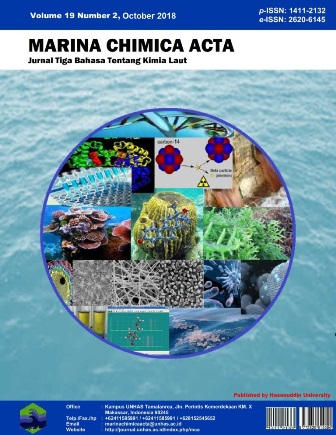ASSESSMENT OF WORKING ENVIRONMENT IN READY-MADE GARMENT INDUSTRIES: A CASE STUDY IN GAZIPUR, BANGLADESH
DOI:
https://doi.org/10.20956/mca.v19i2.5389Abstract
The study was conducted to assess the ambient environmental condition (temperature, humidity, noise and illumination) in the SIJI Garments Co. Ltd., Ehsan Garments Ltd. and Silver Composite Textile Mills Ltd. in Gazipur District, Bangladesh from September, 2016 to February, 2017 (during winter season) to know the internal working environment of the garment industries. In the SIJI Garments Co. Ltd., the highest temperature was observed in the cutting section (28.7°C), sewing section (28.9°C) and packaging section (29.2°C) which exceeded the guideline values. The highest noise level was observed in packaging section (86.6 dB). The illumination level in the most densely populated sections of workers such as cutting section (450 lux), sewing section (490 lux) and sample section (488 lux) were found unpleasant for the workers. In Ehsan Garments Ltd., the highest temperature was observed in sewing section (26.4°C) which exceeded the ASHRAE (American Society of Heating, Refrigerating and Air Conditioning Engineers)standard and the noise level in sewing section (88.4) which exceeded the ECR guidelines. In Silver Composite Textile Mills Ltd. the illumination level was poor in almost all sections specially cutting (466 lux), sewing (565 lux) and finishing (515 lux) sections where maximum number of workforce was employed. The temperature of all sections of three readymade garment industries were optimum to moderately high, humidity level was around optimum level but the noise levels highly exceeded the ECR, 1997. The illumination level was insufficient especially in the cutting and sewing section.The study revealed that congested work area, improper ventilation, building design, excessive noise, poor illumination, dust and no use of personal protective equipment were the major problem faced by the workers in these industries.Downloads
References
Padmini, D.S. and Venmathi, A. 2012. Unsafe Work Environment in Garment Industries, Tripur, India. Online Journal of Environmental Research and Development,7(1A): 569-575.
Quddus, M. and Rashid, S. 2000. Entrepreneurs and Economic Development: the remarkable story of garment exports from Bangladesh. The University Press Limited, Dhaka, pp. 65-66.
BGMEA (Bangladesh Garment Manufacturers and Exporters Association), 2010. Main Functions of BGMEA.
Katzschner, L. 1988. The urban climate as a parameter for urban development. Energy and Buildings, 11(1): 137-147.
Shukla, R. and Rao, D.R.K.V.S. 2015. Ergonomic Analysis of Environmental Conditions in Garment Manufacturing Industries in Bengaluru, India.
Salehin, S., Islam, K.M.N. Alam, M. S. and Hossain M.M. 2014. Industrial Noise Levels in Bangladesh; is Worker Health at Risk? Polish Journal of Environmental Studies, 23(5): 1719-1726.
Mridha, A. M. H. 2002. A Study of Thermal Performance of Operable Roof Insulation, with Special Reference to Dhaka, M.Arch. Thesis (Unpublished), Department of Architecture, Bangladesh University of Engineering and Technology.
Uttam, D. D. 2015. Lighting in Textile industry. International Journal of Advanced Research in Engineering and Applied sciences, 4(2): 17-26.
ASHRAE (American Society of Heating, Refrigerating and Air Conditioning Engineers). 2004. User’s Manual: ANSI/ASHRAE/ IESNA Standard 90.1.ASHRAE Research Publication Department. pp. 9-29.
Khan, J. 2016. Study on Ambient Environmental Quality and Sanitation Status in Garment industries of Bangladesh.MS Thesis (Unpublished), Department of Environmental Science and Resource Management, Mawlana Bhashani Science and Technology University.
BNBC (Bangladesh National Building Codes), 2006. Bangladesh Gazette, Housing and Building Research Institute and Bangladesh Standards and Testing Institutes. Dhaka: City Art press Ltd.
ECR (Environmental Conservation Rules) 1997. Ministry of Environment and Forest (MoEF). Government of the People’s Republic of Bangladesh.

